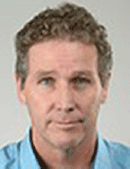Exploring for the Future geomechanics: breaking down barriers to exploration
Adam H. E. Bailey A D , Amber J. M. Jarrett A C , Liuqi Wang A , David N. Dewhurst B , Lionel Esteban B , Shane Kager B , Ludwig Monmusson B , Lidena K. Carr A and Paul A. Henson AA Geoscience Australia, 101 Jerrabomberra Avenue, Symonston, ACT 2609, Australia.
B CSIRO Energy, 26 Dick Perry Avenue, Kensington, WA 6151, Australia.
C Present address, Northern Territory Geological Survey, GPO Box 4550, Darwin, NT 0811, Australia.
D Corresponding author. Email: adam.bailey@ga.gov.au
The APPEA Journal 61(2) 579-587 https://doi.org/10.1071/AJ20039
Accepted: 22 February 2021 Published: 2 July 2021
Journal Compilation © APPEA 2021 Open Access CC BY
Abstract
Exploring for the Future (EFTF) is an Australian Government initiative focused on gathering new data and information about potential mineral, energy and groundwater resources across Australia. The energy component of EFTF, initially focussed on northern Australia, aims to improve our understanding of the petroleum potential of frontier Australian basins. Building an understanding of geomechanical rock properties is key to understanding both conventional and unconventional petroleum systems as well as carbon storage and sedimentary geothermal systems. Under EFTF, Geoscience Australia has undertaken geomechanical work including stress modelling, shale brittleness studies and the acquisition of new rock property data through extensive testing on samples from the Paleo- to Mesoproterozoic South Nicholson region of Queensland and the Northern Territory, and the Paleozoic Kidson Sub-basin of Western Australia. Work in these regions demonstrates regional stress orientations in broad agreement with previously modelled, continent-scale stress orientations and stress magnitudes that vary through the basin with depth and by lithology. Rock testing highlights potentially brittle shales and demonstrates variable rock properties in line with lithology. These analyses are summarised herein. Providing baseline geomechanical data in frontier basins is essential as legacy data coverage can often be inadequate for making investment decisions, particularly where unconventional plays are a primary exploration target. As EFTF increases in scope, Geoscience Australia anticipates expanding these studies to encompass further underexplored regions throughout Australia, lowering the barrier to entry and encouraging greenfield exploration.
Keywords: Exploring for the Future, Canning Basin, Kidson Sub-basin Isa Superbasin, South Nicholson region, geomechanics, rock strength, stiffness, velocity, brittleness, mineralogy, porosity, permeability, seal capacity, Young’s modulus, Poisson’s ratio, present-day stress, in situ stress, stress regimes, Barnicarndy 1.

Dr. Adam H. E. Bailey is a petroleum geoscientist at Geoscience Australia, with expertise in petroleum geomechanics, structural geology and basin analysis. He graduated with a BSc (Hons) in 2012 and a PhD in 2016 from the Australian School of Petroleum at the University of Adelaide. Working with the Onshore Energy Systems team at Geoscience Australia, Adam is currently working on the flagship Exploring for the Future Program, and is the geology discipline lead for the Geological and Bioregional Assessment Program. |

Dr. Amber J. M. Jarrett is a geochemist working in the Basin Systems section at the Northern Territory Geological Survey. Prior to this, she worked for 7 years in the Minerals, Energy and Groundwater Division at Geoscience Australia. Her research interests include basin hosted resource potential, organic–inorganic geochemistry, isotopes, Proterozoic biomarkers and early life. Amber graduated with a BSc (Hons), with a major in geology and biology, in 2008 and a PhD in 2014 from the Australian National University. Amber is also a key researcher in the MinExCRC. |

Dr. Liuqi Wang is a well analyst at Geoscience Australia working in the Minerals, Energy and Groundwater Division. He received his PhD in petroleum engineering and worked as a research fellow at the University of New South Wales before joining Geoscience Australia. His research interests include petrophysics, static and dynamic reservoir modelling, applied statistics and artificial intelligence. He is a member of PESA and EAGE. |

David N. Dewhurst is a chief research scientist at CSIRO Energy in Perth. He holds a BSc (Hons) in geology from the University of Sheffield (UK) and a PhD in physics from the University of Newcastle Upon Tyne, UK. He previously held post-doctoral positions at the University of Birmingham, UK, the University of Newcastle upon Tyne, UK, the Institut Français du Pétrole near Paris and Imperial College, London, before moving to CSIRO in 1998. He works on mechanical and physical properties of rocks for petroleum exploration and development, specialising in overburden and gas shales, as well as reservoir and seal evaluation for geological storage of CO2 and other gases. |

Lionel Esteban holds a PhD in applied geophysics, magnetic environment and petrophysics from joint French Universities (University Paul Sabatier-Toulouse and University of Strasbourg, EOST and Institut de Physique du Globe, IPG) and the French Nuclear Waste Management (ANDRA). Lionel Esteban is currently a principal petrophysicist at CSIRO (Perth, WA), a member of SPWLA and SPE, and an academic editor in Geofluids Journal. He develops and tests petrophysical experimental laboratory approaches and integrates them to log analysis to characterise and understand the physical properties responses of unconventional and conventional reservoirs at different scales, using a wide spectrum of petrophysical tools, including X-ray imaging, electrical, nuclear magnetic resonance, mechanical and core flooding under (or not) HP/HT. His current research focuses on low permeability reservoirs to understand clay mineral relationships, hydrocarbon storage and sealing capacity, CO2–rock interactions and core flooding in carbonates, drilling mud effects on rock properties in conventional reservoirs. |

Shane Kager has worked for CSIRO Energy 13 years and is a team leader and manager for the Geomechanics Geophysics Laboratory in Kensington. He has NATA accredited quality management qualifications with 15 years prior to CSIRO in the private sector in heavy industry laboratories research and development teams, specialising in instrumentation and quantitative/qualitative analysis. |

Ludwig Monmusson is a technical officer at the CSIRO Geomechanics Geophysics Laboratory in Perth. After studying chemistry initially, he now has 13 years of experience in geomechanics. He worked at Institut Français du Pétrole Energies Nouvelles (IFPEN), near Paris, first on petrophysics for chemical EOR, then on geomechanics over a 6-year period. Then he spent a further 6 years at Total’s Scientific Centre in Pau in south west of France where he managed equipment and metrology in the Rock Mechanics laboratory. He joined CSIRO in 2019. |

Lidena Carr is a geoscientist for the Onshore Energy Systems Directorate, Basins Systems Branch, Minerals, Energy and Groundwater Division at Geoscience Australia. She graduated from the Australian National University with a BA/BSc (Hons) in 2004, with a major in geology and human ecology. In 2007, she joined Geoscience Australia and then ACRES (satellite imagery), before moving to her current position as a seismic interpreter and basin analyst. She currently works within the Exploring for the Future Program and a member of GSA. |

Paul Henson graduated from the University of Tasmania and is currently the Director of the Onshore Energy Systems section at Geoscience Australia. He has extensive experience in the minerals sector working on mineral systems in Proterozoic and Archaean terranes. Since 2010, he has led the Australian Governments’ onshore carbon storage program, undertaking deep onshore drilling and seismic acquisition programs in collaboration with the states and industry. He now manages the EFTF Energy program leading to a team of researchers to acquire new pre-competitive geoscientific data to improve our understanding of the oil and gas potential of Australian onshore basins. |
References
Bailey, A., Jarrett, A., Tenthorey, E., and Henson, P. (2021). Understanding present-day stress in the onshore Canning Basin of Western Australia. Australian Journal of Earth Sciences , .| Understanding present-day stress in the onshore Canning Basin of Western Australia.Crossref | GoogleScholarGoogle Scholar |
Bailey, A. H., Wang, L., Henson, P. A., and Hall, L. (2019). Rock properties and in-situ stress state of the Egilabria Prospect, Lawn Hill Platform, Queensland. The APPEA Journal 59, 383–393.
| Rock properties and in-situ stress state of the Egilabria Prospect, Lawn Hill Platform, Queensland.Crossref | GoogleScholarGoogle Scholar |
Carr, L. K., Edwards, D. S., Southby, C., Henson, P., Haines, P., Normore, L., Zhan, A., Brooks, D., MacFarlane, S., Boreham, C. J., Grosjean, E., Mory, A. J., Wang, L., and Gunning, M.-E. (2020). Kidson Sub-Basin seismic survey and Waukarlycarly 1 stratigraphic well: an acquisition program for evaluating Canning Basin petroleum systems. In ‘Exploring for the Future: Extended Abstracts’. (Eds K. Czarnota, I. Roach, S. Abbott, M. Haynes, N. Kositcin, A. Ray and E. Slatter.) (Geoscience Australia: Canberra.)
CSIRO (2020). Petrography and seal capacity of a diamictite from Waukarlycarly-1: report for Geoscience Australia. Geoscience Australia, Canberra.
Gorton, J., and Troup, A. (2018). Petroleum systems of the Proterozoic in Northwest Queensland and a description of various play types. The APPEA Journal 58, 311–320.
| Petroleum systems of the Proterozoic in Northwest Queensland and a description of various play types.Crossref | GoogleScholarGoogle Scholar |
Jarrett, A., Bailey, A., Hall, L., Champion, D., Wang, L., Long, I., Webster, T., Webber, S., Byass, J., Gilmore, S., Hong, Z., Chen, J., and Henson, P. (2019). A multiproxy characterisation of shale brittleness in the Isa Superbasin, Northern Australia. In ‘Asia Pacific Unconventional Resources Technology Conference, Brisbane, Australia, November 2019’. (SPE/AAPG/SEG: Brisbane, Australia.)
Jarrett, A. J. M., Bailey, A. H. E., Carr, L. K., Anderson, J. R., Palu, T. J., Carson, C. J., Boreham, C., Southby, C., MacFarlane, S. K., Hall, L. S., Bradshaw, B., Orr, M., Munson, T., Williams, B., Simmons, J., Close, D., Edwards, S., Troupe, A., Gorton, J., Gunning, M., and Henson, P. A. (2020a). Multidisciplinary approach to improving energy prospectivity in the South Nicholson Region. In ‘Exploring for the Future: Extended Abstracts’. (Eds K. Czarnota, I. Roach, S. Abbott, M. Haynes, N. Kositcin, A. Ray and E. Slatter.) (Geoscience Australia, Canberra.)
Jarrett, A. J. M., Bailey, A. H. E., Dewhurst, D. N., Esteban, L., Kager, S., and Monmusson, L. (2020b). ‘Exploring for the Future – South Nicholson Basin and Lawn Hill Platform geomechanical testing data release.’ (Geoscience Australia: Canberra.)
Jarrett, A. J. M., Bailey, A. H. E., Dewhurst, D. N., Esteban, L., Kager, S., and Monmusson, L. (2020c). ‘Exploring for the Future – Waukarlycarly 1 Petrophysical Testing Program Data Release, Canning Basin, Australia’. RECORD 2020/028. (Geoscience Australia, Canberra.)
Rajabi, M., Tingay, M., Heidbach, O., Hillis, R., and Reynolds, S. (2017). The present-day stress field of Australia. Earth-Science Reviews 168, 165–189.
| The present-day stress field of Australia.Crossref | GoogleScholarGoogle Scholar |
Southby, C., Carr, L. K., Henson, P., Haines, P. W., Zhan, A., Anderson, J. R., MacFarlane, S., Fomin, T., and Costelloe, R. (2020). Exploring for the Future: Kidson Sub-Basin Seismic interpretation. In ‘Exploring for the Future: Extended Abstracts’. (Eds K. Czarnota, I. Roach, S. Abbott, M. Haynes, N. Kositcin, A. Ray and E. Slatter.) (Geoscience Australia: Canberra.)
Wilson, A., and Thrane, L. (2020). Waukarlycarly-1: structural and sedimentological analysis of an acoustic televiewer borehole image log, onshore Canning Basin, Western Australia. ImageStrat, on behalf of the Government of Western Australia, Department of Mines Industry Regulation and Safety.


